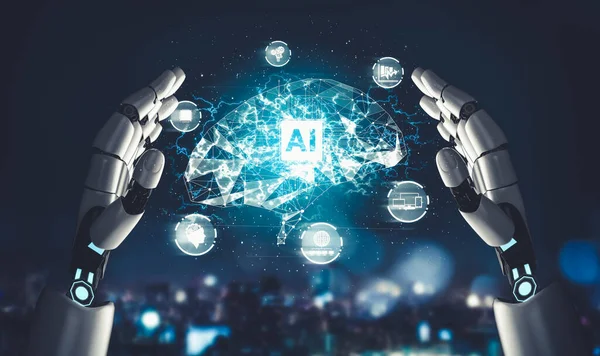







Steps to Use Journey Mapping for Omnichannel Personalization
Customer journey mapping is the process of visualizing the entire experience a customer has with a brand, from initial awareness to post-purchase interactions. By understanding this journey, businesses can identify opportunities to implement omnichannel personalization strategies that provide consistent, relevant, and seamless experiences across all touchpoints. Here’s how mapping the customer journey informs these strategies:
1. Understanding the Customer Journey
A customer journey map typically includes:
- Stages: Key phases such as awareness, consideration, purchase, and loyalty.
- Touchpoints: Interactions across channels (e.g., website, email, social media, in-store).
- Customer Emotions and Needs: The emotional state and specific needs at each stage.
- Pain Points: Frustrations or obstacles customers face during the journey.
By identifying these elements, businesses gain insights into how customers interact with the brand and where personalization can enhance their experience.
2. Role of Journey Mapping in Omnichannel Personalization
1. Identifying Critical Touchpoints
Journey mapping highlights the key moments where customers interact with the brand:
- Example: A customer browsing products on a mobile app might abandon their cart. A personalized follow-up email with a discount can re-engage them.
2. Recognizing Channel Preferences
Mapping reveals which channels customers prefer at different stages:
- Example: A customer may discover the brand through social media, research on a desktop, and complete a purchase via mobile. Personalization ensures consistency and relevance across all these channels.
3. Addressing Pain Points
Understanding customer frustrations allows businesses to create personalized solutions:
- Example: If customers find checkout processes lengthy, offering saved payment preferences for returning users can streamline the experience.
4. Enhancing Emotional Connection
Mapping uncovers opportunities to personalize based on customer emotions:
- Example: Sending a thank-you email after a purchase or celebrating a loyalty milestone.
3. Steps to Use Journey Mapping for Omnichannel Personalization
1. Collect Comprehensive Customer Data
- Behavioral Data: Actions like browsing, clicks, and purchase history.
- Feedback: Surveys, reviews, and support interactions.
- Contextual Data: Location, device type, and time of interaction.
- Tools like Customer Data Platforms (CDPs) integrate data across channels to build a complete view of the customer.
2. Define Customer Personas
Segment customers into personas based on journey mapping insights:
- Example: A “first-time visitor” may need educational content, while a “loyal customer” might appreciate exclusive offers.
3. Map Individual Journeys Across Channels
For each persona, detail the steps and touchpoints across all channels:
- Example: Map how a “price-sensitive shopper” moves from discovering a product through social media to comparing prices on a website, and finally purchasing in-store.
4. Implement Personalization at Key Moments
- Awareness Stage: Show personalized ads or content based on search history or social media activity.
- Consideration Stage: Offer tailored recommendations or product comparisons.
- Purchase Stage: Provide real-time support, such as chatbots or personalized checkout flows.
- Loyalty Stage: Send targeted loyalty rewards, exclusive content, or re-engagement offers.
5. Leverage Real-Time Data
Update personalization efforts dynamically based on real-time actions:
- Example: If a customer browses winter coats, show targeted promotions for similar items across all touchpoints.
6. Test and Optimize
- Use A/B testing to refine personalized content and offers.
- Continuously update journey maps based on new customer data and evolving behaviors.
4. Examples of Omnichannel Personalization Using Journey Maps
1. E-commerce:
- Scenario: A customer researches products on a mobile app, abandons their cart, and later visits the website.
- Strategy: Send a reminder email with cart items and show the same items on the homepage when they return.
2. Retail:
- Scenario: A customer browses online but prefers purchasing in-store.
- Strategy: Provide a personalized in-store discount via email and enable in-store staff to access the customer’s online browsing history for tailored assistance.
3. Travel:
- Scenario: A traveler books a flight and later searches for activities at the destination.
- Strategy: Recommend personalized activities or hotel upgrades based on their booking history.
4. Media Streaming:
- Scenario: A subscriber watches a particular genre on their TV and continues viewing on their phone.
- Strategy: Automatically resume playback on the mobile app and recommend similar content.
5. Benefits of Using Journey Maps for Omnichannel Personalization
- Seamless Customer Experience: Consistent messaging and offers across channels reduce friction and enhance satisfaction.
- Improved Engagement: Relevant, personalized content keeps customers invested at each stage of their journey.
- Higher Conversion Rates: Addressing specific needs and preferences encourages timely purchases.
- Stronger Loyalty: Tailored post-purchase interactions foster long-term relationships.
6. Tools for Journey Mapping and Omnichannel Personalization
- Customer Journey Mapping Tools: Lucidchart, Smaply, or Touchpoint Dashboard.
- CDPs and CRMs: Salesforce, Adobe Experience Platform, HubSpot.
- Analytics Tools: Google Analytics, Mixpanel, or Hotjar to track behaviors.
- Personalization Platforms: Dynamic Yield, Optimizely, or Evergage for real-time tailored experiences.
By mapping the customer journey, businesses can uncover actionable insights that guide the implementation of effective omnichannel personalization strategies. This ensures that every customer interaction is relevant, timely, and seamlessly connected, driving better outcomes for both the customer and the business.
#digitalmarketing #marketing #socialmediamarketing #socialmedia #seo #business #branding #onlinemarketing #marketingdigital #digitalmarketingagency #contentmarketing #marketingstrategy #entrepreneur #marketingtips #instagram #advertising #smallbusiness #webdesign #graphicdesign #digital #digitalmarketingtips #design #marketingagency #website #onlinebusiness #ecommerce #webdevelopment #success #startup #emailmarketing #BuddyInfotech #Adindia360 https://buddyinfotech.in/ https://adindia360.in/

